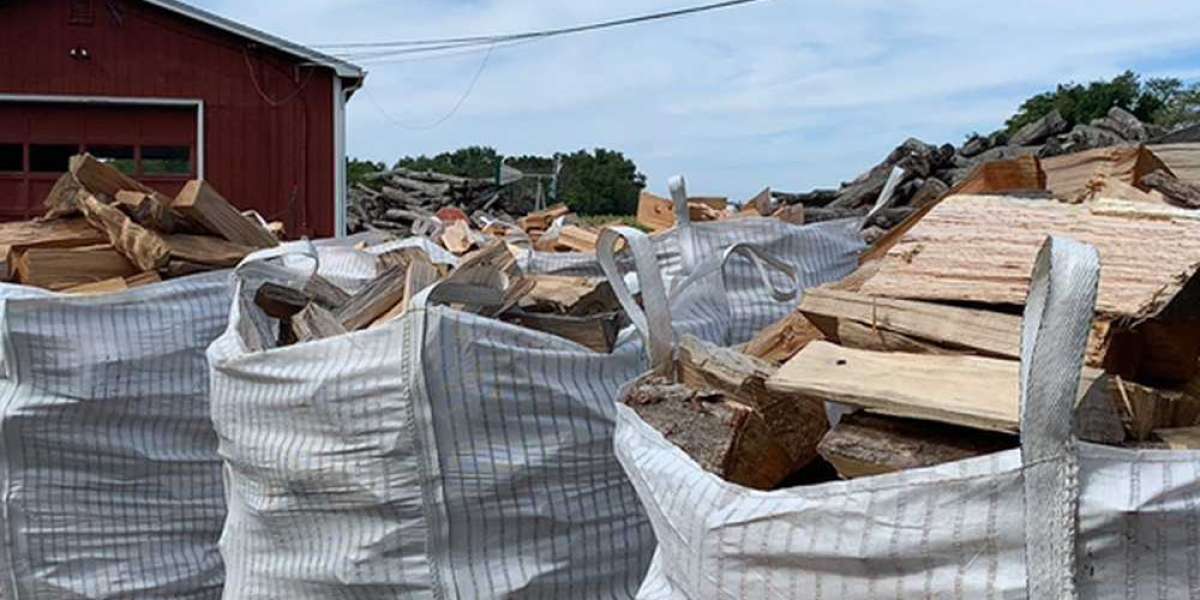When it comes to heating your home or enjoying a cozy campfire, a cord of firewood is a term you’ll frequently encounter. Whether you’re looking to buy a cord of firewood, curious about how much a cord of firewood costs, or wondering about the differences between a full cord and a face cord, this guide will provide all the answers. We’ll also explore the benefits of premium kiln-dried firewood and offer practical tips to ensure you get the best value for your money. Let’s dive into everything you need to know about firewood to keep your fires burning bright and efficiently.
What Is a Cord of Firewood?
A cord of firewood is a standard unit of measurement for firewood in the United States, defined by the USDA as a stack of wood measuring 4 feet high, 4 feet wide, and 8 feet long, totaling 128 cubic feet. This includes the air gaps between the logs, so the actual solid wood content is typically 70–90 cubic feet due to stacking variations. A full cord usually contains 600 to 800 logs, depending on the log length, which is often cut to 16–18 inches for easy burning in fireplaces or wood stoves.
Understanding the cord of firewood measurement is crucial to avoid being shortchanged by suppliers. Some vendors may use vague terms like “truckload” or “stack,” which can lead to confusion. Always verify the dimensions of the wood stack to ensure you’re getting a true cord. This knowledge empowers you to make informed decisions when purchasing firewood for your heating or recreational needs.
Full Cord vs. Face Cord Firewood: What’s the Difference?
When buying firewood, you’ll often come across the terms “full cord” and “face cord.” Understanding the difference between a full cord vs. face cord firewood is essential to ensure you’re getting the right amount of wood for your needs.
Full Cord: As mentioned, a full cord is 128 cubic feet, typically arranged in three stacks of logs, each 4 feet high, 4 feet wide, and 8 feet long. It’s ideal for homeowners who rely on firewood as a primary heat source, lasting 6–12 weeks depending on usage and climate. A full cord is perfect for those with ample storage space and consistent firewood needs throughout the winter.
Face Cord: A face cord, sometimes called a rick, is a smaller stack measuring 4 feet high, 8 feet wide, and typically 16–18 inches deep (the length of the logs). It’s roughly one-third of a full cord, equating to about 42–48 cubic feet. Face cords are popular for occasional fireplace users or those with limited storage space, as they’re easier to manage and often more affordable.
Choosing between a full cord and a face cord depends on your heating needs, storage capacity, and budget. For example, a face cord is sufficient for occasional fires, lasting a few months with moderate use, while a full cord is better for those who burn wood daily. Always clarify with your supplier whether they’re offering a full cord or face cord to avoid misunderstandings.
How Much Is a Cord of Firewood?
The cost of a cord of firewood varies widely based on several factors, including location, wood type, seasoning, and delivery charges. On average, in 2025, a full cord of seasoned hardwood in the U.S. ranges from $150 to $500, with premium hardwoods like oak or kiln-dried logs costing up to $600 or more in areas with high demand or low supply. Here’s a breakdown of the factors affecting the price:
Wood Type: Hardwoods like oak, maple, and hickory are pricier ($275–$400 per full cord) due to their higher density and longer burn time compared to softwoods like pine or spruce ($175–$275 per full cord). Hardwoods produce more heat and less smoke, making them ideal for home heating.
Condition: Green (unseasoned) wood is cheaper but requires 6–24 months to dry before burning efficiently. Seasoned or kiln-dried wood, with moisture content below 20%, costs more but burns hotter and cleaner, reducing creosote buildup in chimneys.
Location: Firewood is more affordable in rural, wooded areas ($150–$300 per cord) compared to urban regions ($300–$600 per cord) due to transportation costs. In the UK, where the term “cord” is less common, prices range from £300–£700 for an equivalent volume (3.62 cubic meters).
Delivery and Stacking: Delivery fees add $25–$100, depending on distance, while stacking services cost $20–$80 per cord. Opting for stacking ensures you can measure the wood to confirm you’re getting the full amount.
For a face cord, expect to pay $75–$200, depending on the same factors. To get the best deal, buy in spring or summer when demand is lower, and consider purchasing green wood if you have time to season it yourself.
Why Choose Premium Kiln-Dried Firewood?
When buying a cord of firewood, the quality of the wood significantly impacts your fire’s performance. Premium kiln-dried firewood is a top choice for many homeowners due to its superior burning qualities. Unlike air-dried or green wood, kiln-dried firewood undergoes a controlled drying process in a kiln, reducing its moisture content to below 20% (often 15% or less). Here are the key benefits:
Cleaner Burn: Kiln-dried wood produces less smoke and creosote, reducing chimney maintenance and improving air quality.
Higher Heat Output: With low moisture, it burns hotter and more efficiently, providing more warmth per log.
Pest-Free: The kiln process eliminates insects and mold, making it safe for indoor storage.
Ease of Lighting: Dry wood ignites quickly, saving time and kindling.
Consistency: Kiln-dried logs are uniformly dry, ensuring predictable performance.
While premium kiln-dried firewood costs more (up to $1,000 per cord in some regions), it’s worth the investment for those prioritizing efficiency and convenience. Look for suppliers offering “Ready to Burn” certifications, like Woodsure in the UK, to ensure quality. For example, a face cord of kiln-dried oak might cost $180–$225, but its longevity and heat output make it a cost-effective choice for frequent users.
Tips for Buying a Cord of Firewood
Purchasing a cord of firewood can be straightforward if you follow these tips to ensure quality and fair pricing:
Verify Measurements: Always measure the stack yourself or request the supplier to stack it for you. A full cord should be 4x4x8 feet, and a face cord should be 4x8 feet with 16–18-inch logs. Avoid vague terms like “truckload” unless the volume is specified.
Check Moisture Content: Use a moisture meter to confirm the wood is below 20% moisture. Dry wood makes a sharp “clack” when two pieces are struck together, while green wood produces a dull thud.
Choose Hardwoods: Opt for dense hardwoods like oak, maple, or ash for longer-lasting fires. Softwoods are better for kindling or quick campfires.
Buy Local: Locally sourced wood reduces transportation costs and prevents the spread of invasive pests. Check with local suppliers or tree services for deals.
Ask About Delivery and Stacking: Confirm whether delivery is included and if stacking is an option. Stacking ensures you can verify the volume and keeps your wood organized.
Plan Storage: Store your cord of firewood off the ground on pallets or logs, under a tarp or awning, to protect it from moisture. Keep only a day or two’s worth indoors to avoid pests.
By following these tips, you’ll ensure you’re getting a fair deal and high-quality wood that meets your needs.
Storing and Using Your Cord of Firewood
Proper storage and usage of your cord of firewood are critical to maintaining its quality and ensuring safe, efficient burns. Here’s how to do it right:
Storage: Stack firewood in a dry, well-ventilated area, ideally under a tarp or in a shed, with the oldest wood on top for easy access. Elevate the stack on pallets to prevent moisture absorption from the ground. Avoid storing large quantities indoors to prevent pest issues.
Seasoning Green Wood: If you buy green wood to save money, split it into smaller pieces and stack it in a sunny, airy spot for 6–24 months, depending on the wood type. Hardwoods like oak take longer to dry than softwoods like pine.
Burning Tips: Use seasoned or kiln-dried wood for cleaner fires. Start with small logs or kindling, and avoid overloading your fireplace, as most can only handle 2–3 logs at a time. For campfires, 2–5 bundles (0.75–1 cubic foot each) suffice for a 2–6 hour fire.
Safety: Have your chimney inspected and cleaned annually to prevent creosote buildup, which can cause chimney fires. Never burn green wood, as it produces excessive smoke and fumes harmful to your health.
How Much Firewood Do You Need?
The amount of firewood you need depends on your usage and heating requirements. Here’s a general guide:
Occasional Use: For weekend campfires or occasional fireplace use, a face cord or a few bundles (4–6 logs each) will last weeks to months.
Supplemental Heating: Homes using firewood as a backup heat source may need a half cord (64 cubic feet) or face cord for the winter.
Primary Heating: In colder climates, a 1,400–1,800 square foot home may require 4–7 cords per winter if firewood is the main heat source. Larger homes may need 8+ cords.
For example, a full cord can last 6–12 weeks for regular use, while a face cord may last a few months for occasional fires. Assess your needs and storage space before ordering to avoid overbuying.
Where to Buy a Cord of Firewood
Finding a reliable supplier is key to getting a quality cord of firewood. Here are some options:
Local Firewood Suppliers: Search for reputable vendors in your area through the Better Business Bureau or local classifieds. Ask for references and verify measurements.
Tree Services: Some tree removal companies sell firewood at lower prices, especially green wood.
Online Marketplaces: Websites like Craigslist or Search Tempest can offer deals, but be cautious and verify the seller’s reputation.
Retail Stores: Home improvement stores or gas stations sell bundles for quick needs, though they’re pricier per unit.
For premium kiln-dried firewood, look for specialized suppliers like BostonFirewood.com or Lumberjacks, which offer delivery and stacking services. Always request a receipt with the supplier’s details and the volume purchased.
Conclusion
Understanding the ins and outs of a cord of firewood ensures you make informed decisions when buying firewood. Whether you’re choosing between a full cord or a face cord, opting for premium kiln dried firewood, or calculating how much a cord of firewood costs, this guide equips you with the knowledge to stay warm and cozy. By verifying measurements, checking moisture content, and storing your wood properly, you’ll maximize its efficiency and enjoy hassle-free fires. Ready to buy a cord of firewood? Contact a trusted local supplier today and start preparing for those chilly nights!








